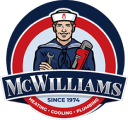Water conservation is a vital environmental concern that impacts us all, particularly in urban areas like Lufkin, Nacogdoches, Livingston, and Huntsville. We understand the significant role that plumbing repairs can play in reducing water usage. Efficiently maintained tubs and showers are not only crucial for the longevity of your plumbing systems but also for conserving water and reducing waste. We will explore how regular maintenance and timely repairs of tubs and showers at both residential and commercial levels can substantially contribute to water conservation efforts. Join us as we delve into the connection between tub and shower repairs and responsible water management, highlighting specific measures and expert guidelines.
Understanding the Importance of Tub and Shower Maintenance
Regular maintenance of tubs and showers is crucial, not just for maintaining the aesthetics and functionality of these fixtures but also for conserving water. Faucets, showerheads, and tub spouts can develop leaks over time, which, if left unchecked, contribute to significant water wastage. It is estimated that a single drip per second can waste more than 3,000 gallons per year. Addressing these leaks promptly through proper maintenance not only saves water but also reduces the strain on your plumbing system, which can extend its lifespan and improve its efficiency.
Common Issues in Tub and Shower Plumbing
Several common issues can affect the plumbing of tubs and showers, leading to water wastage. These include dripping faucets, leaking showerheads, and faulty tub spouts. Over time, the washers and cartridges within these fixtures wear out and lose their ability to hold water effectively. Mineral buildup from hard water also contributes to these problems, obstructing the flow and causing leaks. Addressing these issues promptly not only prevents water loss but also protects the fixture from further damage.
Another typical problem is the misalignment or deterioration of grout and caulk around the tub and shower areas. Cracks and gaps in these materials can lead to leaks into the subflooring, which over time, might cause severe water damage and even structural issues.
Best Practices for Repairing Tub and Shower Leaks
The first step in addressing any leak in a tub or shower is to identify the source of the leak. This could be from the faucet, the drainage system, or through cracks in the tile or caulking. Once identified, it’s essential to choose the right tools and materials for the repair. For faucet leaks, it often means replacing worn-out washers or cartridges. When dealing with tile or grout issues, reapplying caulk or regrouting may be necessary.
It’s also beneficial to install water-efficient fixtures like low-flow showerheads and faucet aerators. These devices work by reducing the flow of water without compromising the pressure, providing a satisfactory user experience while significantly reducing water use. By replacing old, inefficient models with modern, water-saving devices, homeowners and businesses can help conserve a substantial amount of water annually.
For best results, we use only high-quality materials and proven techniques that ensure lasting repairs, maximizing efficiency and sustainability. Regular professional inspections can help detect issues before they develop into severe problems, ensuring that your plumbing system remains optimal.
Advanced Techniques in Modern Plumbing Repair
In modern plumbing, advanced techniques and tools are now used to ensure more precise and long-lasting repairs. For instance, thermal imaging cameras can detect hidden water leaks behind walls or under floors without the need for invasive procedures. These tools not only help in quickly pinpointing the problem areas but also in verifying that the repair was successful.
Hydro jetting is another advanced technique used primarily for clearing serious blockages in shower drains. Unlike traditional snaking methods that might only puncture through the clog, hydro jetting completely cleans out the pipes, removing soap scum, hair, and other debris buildup that could lead to clogs.
Another innovative method involves using trenchless technology for replacing old pipes that are too worn out to repair. This method allows for the replacement of pipes without the need to dig up the entire area, preserving the bathroom’s aesthetic and structural integrity while ensuring the plumbing system functions efficiently.
These advanced solutions underscore our commitment to providing cutting-edge service and efficient water management strategies, ensuring our clients receive the most effective solutions for their plumbing needs.
By implementing these regular maintenance procedures and embracing advanced repair techniques, we can ensure that tub and shower facilities are not only fully functional but also contribute positively to water conservation efforts. This proactive approach goes a long way in preserving our most crucial resource—water—while maintaining the integrity and efficiency of our plumbing systems.
Securing Sustainable Futures with Expert Plumbing Services
Maintaining and repairing tubs and showers are not just about fixing immediate problems; it’s about taking proactive steps towards sustainable water use. We leverage the latest technology and methods to provide effective plumbing solutions that align with our commitment to environmental conservation. Our experienced technicians at McWilliams and Son are well-versed in handling various plumbing challenges, ensuring that every repair contributes to a more efficient and water-wise future.
For those looking to enhance their facilities and contribute to global water conservation efforts, we’re here to help. Schedule a professional assessment with us today, and let’s work together to make your water use as efficient and environmentally friendly as possible. Together, we can take significant strides toward sustainability, one repair at a time. Contact our plumber in Cypress to learn more about our services and how we can assist you in achieving a water-efficient home or business.


